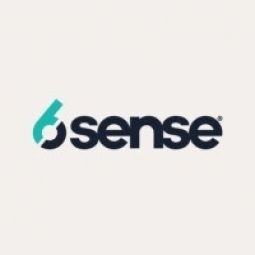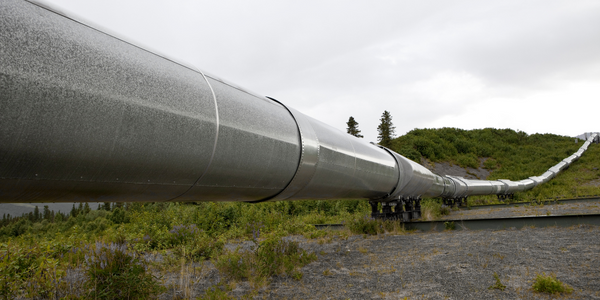技术
- 应用基础设施与中间件 - API 集成与管理
- 平台即服务 (PaaS) - 应用开发平台
适用行业
- 医疗保健和医院
- 石油和天然气
适用功能
- 采购
- 销售与市场营销
用例
- 对话机器人
关于客户
PTC 是一家全球软件公司,致力于改变企业创建、运营和服务产品的方式。该公司最近建立了一个独特的营销技术堆栈,其中包括 6sense、Drift 和 People.ai,彻底改变了其识别、联系和追求全新业务的能力。这使得更快、更清晰地识别潜在客户、与客户的联系、购买阶段的研究、客户需求和兴趣的信息以及对新的和现有渠道的评估。
挑战
PTC 正在寻找一种可以将账户意图计划与 AI 平台相结合的解决方案。目标是提供以客户为中心的数字体验,在每次买家互动中提供以价值为导向的内容,从而促进渠道增长。该公司拥有一支强大的营销运营团队,秉持“数据驱动一切”的心态。在将新解决方案集成到现有技术堆栈中时,PTC 投入了大量精力进行研究。经过几个月的全面评估,PTC 决定同时与 6sense、Drift 和 People.ai 签订合同。
解决方案
6sense、Drift 和 People.ai 的结合使 PTC 的销售和营销团队能够更智能、更快速地进行推广。它使他们能够在每次买家互动中提供相关的、令人难忘的价值。 6sense 识别 VIP 帐户和活动,同时还发现值得强力参与的新的高意图帐户。 Drift 是一个对话式营销平台,可以通过其聊天机器人与 B2B 买家直接互动,在正确的时间启动正确的联系。 People.ai 将销售团队的外展和活动无缝集成到 PTC 的 CRM 中,以揭示一条理想的、经过验证的有效途径。这使团队能够评估交易的健康状况并利用最佳实践来开展未来的工作。
运营影响
数量效益

Case Study missing?
Start adding your own!
Register with your work email and create a new case study profile for your business.
相关案例.

Case Study
Taking Oil and Gas Exploration to the Next Level
DownUnder GeoSolutions (DUG) wanted to increase computing performance by 5 to 10 times to improve seismic processing. The solution must build on current architecture software investments without sacrificing existing software and scale computing without scaling IT infrastructure costs.

Case Study
Remote Wellhead Monitoring
Each wellhead was equipped with various sensors and meters that needed to be monitored and controlled from a central HMI, often miles away from the assets in the field. Redundant solar and wind generators were installed at each wellhead to support the electrical needs of the pumpstations, temperature meters, cameras, and cellular modules. In addition to asset management and remote control capabilities, data logging for remote surveillance and alarm notifications was a key demand from the customer. Terra Ferma’s solution needed to be power efficient, reliable, and capable of supporting high-bandwidth data-feeds. They needed a multi-link cellular connection to a central server that sustained reliable and redundant monitoring and control of flow meters, temperature sensors, power supply, and event-logging; including video and image files. This open-standard network needed to interface with the existing SCADA and proprietary network management software.

Case Study
Refinery Saves Over $700,000 with Smart Wireless
One of the largest petroleum refineries in the world is equipped to refine various types of crude oil and manufacture various grades of fuel from motor gasoline to Aviation Turbine Fuel. Due to wear and tear, eight hydrogen valves in each refinery were leaking, and each cost $1800 per ton of hydrogen vented. The plant also had leakage on nearly 30 flare control hydrocarbon valves. The refinery wanted a continuous, online monitoring system that could catch leaks early, minimize hydrogen and hydrocarbon production losses, and improve safety for maintenance.

Case Study
Hospital Inventory Management
The hospital supply chain team is responsible for ensuring that the right medical supplies are readily available to clinicians when and where needed, and to do so in the most efficient manner possible. However, many of the systems and processes in use at the cancer center for supply chain management were not best suited to support these goals. Barcoding technology, a commonly used method for inventory management of medical supplies, is labor intensive, time consuming, does not provide real-time visibility into inventory levels and can be prone to error. Consequently, the lack of accurate and real-time visibility into inventory levels across multiple supply rooms in multiple hospital facilities creates additional inefficiency in the system causing over-ordering, hoarding, and wasted supplies. Other sources of waste and cost were also identified as candidates for improvement. Existing systems and processes did not provide adequate security for high-cost inventory within the hospital, which was another driver of cost. A lack of visibility into expiration dates for supplies resulted in supplies being wasted due to past expiry dates. Storage of supplies was also a key consideration given the location of the cancer center’s facilities in a dense urban setting, where space is always at a premium. In order to address the challenges outlined above, the hospital sought a solution that would provide real-time inventory information with high levels of accuracy, reduce the level of manual effort required and enable data driven decision making to ensure that the right supplies were readily available to clinicians in the right location at the right time.









